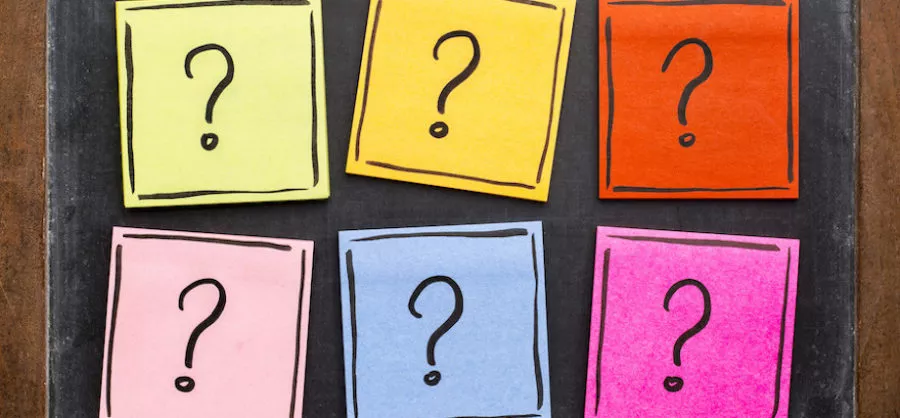To help spark curiosity, wonder and discovery—the things that engage us in learning—I encourage educators to provoke more student inquiry. If students are asking more questions, and you work with them as part of a team to discover the answers to their questions together, they will be more engaged in their learning journey.
But I’ll be frank, the word “inquiry” is one of those teacher-ese
terms that sometimes doesn’t resonate in any way, nor provide a way of understanding how it can be implemented. I’m hoping to break it down here in a way that can be easily digested.
We talk about the 4Cs: critical thinking, collaboration, creativity, and communication. But the fifth C—curiosity—is just as important. I would also argue that instilling a sense of curiosity in our students is our most vital task. When it’s time for them to leave our care, we want them to take along the desire to continue asking questions and looking for answers.
Don’t worry. I’m not suggesting that students take the reins entirely. As their coach, you control the ultimate destination, and the direction they should take to get there. But allowing them to ask questions creates a more rich—a more curvy, if you will—route.
Opening the door to questions can sometime make it feel like the fast-moving train of content-driven classes is slowing down. I am the first to admit that. But you must trust that you are generating enagement, which will help make your lessons stick.
Way to Trigger Inquiry
The key is to build in spontaneous, in-the-moment instruction that encourages students to ask questions and fumble toward the answers. This “flexible instruction,” as I call it, only appears to be spontaneous. In fact, you plan for and encourage it. In this way, teachers can create a more student-driven environment that still has scaffolds and structure. Here are some concrete ways to trigger ongoing inquiry in a classroom:
At the Beginning of a Unit: After introducing a topic in an engaging way—like using an entry event to launch a unit, for instance—give students the chance to develop a list of questions. At this stage, no question is too “out there.” Then, use this as an opportunity to teach high-level sentence stems and see if students can change those close-ended questions into ones that are of a higher level and more open ended. This initial brainstorm can then be whittled down to the highest quality of questions that can then become a classroom-created list. The resulting questions can guide student research, be used as writing prompts for future formative assessments, and as talking points once students have generated some expertise in the topic.
During Research: Students can generate questions prior to the appearance of a guest speaker. To showcase their prior knowledge of the topic, have students incorporate their research into a sentence stem before launching into questions.
For example, when my middle school students were interviewing a scientist to ask about the physics of their superhero powers for their superhero origin stories, one student developed the question,
“I know that a positive and negative charge is needed to create lightning. If my superhero has one hand that generates one charge and the other hand generates the opposite, and I put them together, could my hero possibly create lightning?”
After an Initial Draft/Prototype: Once a student has created a rough draft or a first prototype, have them develop questions that are designed to elicit the feedback they want to receive. That way, they will get what they need. Also, the questions created during this step will allow you to understand what a student knows about the topic. For instance, after a student writes a first draft in my class, I will look at the question quality in order to formatively assess their knowledge of how to write. If a student poses the question: Is this good?
 Heather Wolpert-Gawron
Heather Wolpert-Gawron
I know that this student might be at a loss and is not using this opportunity to reflect on what we’ve learned about writing. But if a students asks instead: Does my evidence strongly reflect my thesis statement? I know that kid is thinking even while needing help.
To Set up Assessments: While you’re at it, have students develop some of the questions they might encounter on an assessment. If you’ve spent some time prepping the students in high-quality questions, they can develop some questions that can then be distributed to peers to formatively assess a variety of topics.
By “outsourcing” to the students themselves some of the responsibility of generating curiosity, you will cast yourself as an ally in their learning.
The bottom line is this: Get excited by their curiosity. Don’t panic at the possibility of a lesson being derailed.
See every question as an opportunity to learn deeper and to take them on a more exciting learning journey. And when questions confuse you, well . . . smile at those, too.
You don’t need to know everything. You’ve got curious brains in the room to learn with you. Your responsibility is to give students a safe space in which they can enjoy the confusion and the inevitable learning.
Heather Wolpert-Gawron is a middle school teacher at Jefferson Middle School in San Gabriel, Calif., and the author of Just Ask Us: Kids Speak Out on Student Engagement.


